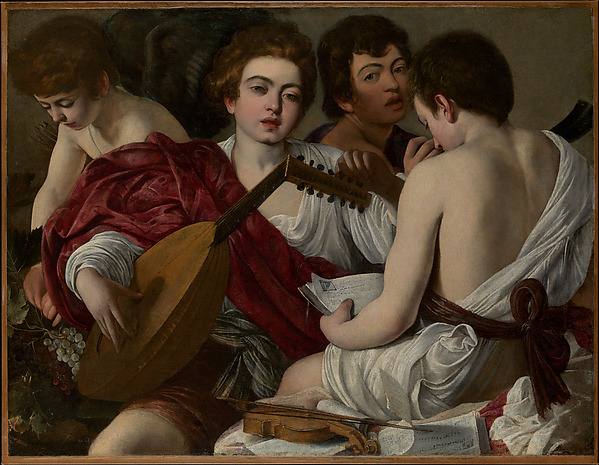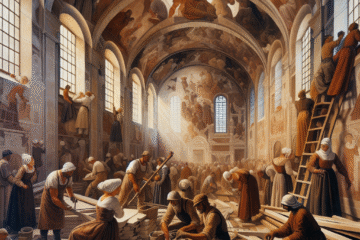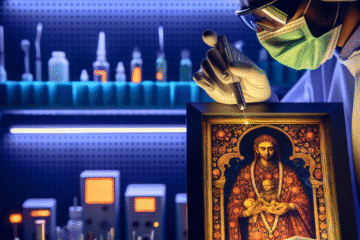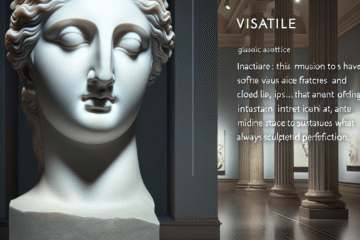
“
The World is my country, all mankind are my brethren, and to do good is my religion.
”
— Thomas Paine
‘Oil is My Weapon’: Caravaggio’s Guerrilla Realism Explained
Introduction: The Rebel with a Palette
Michelangelo Merisi da Caravaggio wasn’t merely a revolutionary painter—he was a visual agitator who wielded oil paint like a weapon. In an era when the Catholic Church used art as propaganda to reinforce orthodoxy during the Counter-Reformation, Caravaggio dared to show saints with dirty feet, virgins with peasant bodies, and executioners in blood-stained shirts. His radical realism wasn’t just a stylistic innovation; it was a form of visual insurgency that disrupted the sacred conventions of his time. This blog reframes Caravaggio’s work as guerrilla realism: a subversive act that challenged the spiritual and visual dogmas of Rome’s institutional power.
1. The Baroque Battlefield: Art under the Counter-Reformation
The late 16th century was a time of doctrinal crisis. The Protestant Reformation had fractured Christendom, and the Catholic Church responded through the Counter-Reformation—a movement as aesthetic as it was theological. The Council of Trent (1545–1563) mandated that religious art should be clear, didactic, and emotionally moving. Rome became a stage for spiritual theater, where grandeur, divine light, and idealized figures reassured the faithful of the church’s authority.
Artists like Annibale Carracci painted idealized biblical scenes in line with these directives. Caravaggio, by contrast, positioned himself as a visual insurgent. Whereas his peers sought to uplift through beauty, Caravaggio grounded the sacred in raw physicality and unvarnished truth. With an unblinking eye, he embraced humanity—sin, dirt, and all—as a vehicle for divine experience. In doing so, he redefined what holiness could look like.
2. From Canvas to Combat: Caravaggio’s Urban Realism
Rome in the early 1600s was a city of contradictions: sacred capitals abutted taverns, and churches stood beside brothels. Caravaggio found artistic inspiration not in the heavens, but in the streets. He recruited prostitutes, beggars, and commoners as models, unconcerned with social hierarchy or institutional propriety. These choices weren’t incidental; they were a conscious affront to the sanitized piety promoted by the Church.
In works like The Calling of Saint Matthew and The Martyrdom of Saint Matthew, Caravaggio transformed bar scenes into metaphysical dramas. The chiaroscuro lighting—his signature use of stark light and deep shadow—wasn’t just aesthetic flair; it echoed the moral gray zones of everyday life. His compositions invited viewers not to gaze upon divine perfection from afar but to confront the tremors of grace coursing through mortal bodies and moments of hesitation.
3. The Weaponization of Oil and Light
Caravaggio’s medium became his message. Oil paint, with its depth, richness, and pliability, enabled him to build viscerally real textures—sweat glistens, blades gleam, and eyes glimmer with terror or divine conviction. The artist used this medium not to flatter but to confront. His naturalistic approach stripped away the idealization that had long distanced viewers from sacred subjects.
Perhaps nowhere is this clearer than in The Incredulity of Saint Thomas, where the apostle thrusts his finger into Christ’s wound. There is no attempt to spiritualize the act. Instead, Caravaggio forces the viewer into an uncomfortable closeness with flesh, doubt, and blood. The viewer cannot remain passive; they must react, and in doing so, they step into the narrative. That intimacy, deliberately crafted through oil and light, upends the hierarchy of sacred versus profane. Everyone becomes complicit in the divine drama.
4. Church, State, and the Politics of Realism
Though his patrons included powerful cardinals and religious orders, Caravaggio’s relationship with the Church was fraught. His work often sparked controversy, even rejection. Death of the Virgin was refused by the Carmelites, who were scandalized by the corpse-like depiction of Mary, said to have been modeled after a drowned prostitute. Yet supporters like Cardinal Francesco del Monte saw in Caravaggio a prophetic voice—one capable of stirring spiritual awe not through elevation, but through magnification of the human condition.
Caravaggio’s art undermined the Church’s authority even as it served it. He navigated a delicate line, walking the edge between commission and condemnation. In a sense, he echoed the Baroque period’s larger irony: a desire for control that inevitably bred disorder. As art historian Gilles Lambert suggested, Caravaggio painted a world “where divine order is continually fractured by human will and consequence.”
5. Legacy of a Visual Revolutionary
Caravaggio’s guerrilla realism paved the way for future generations of artists who rejected idealism in favor of immediacy. His influence touched Rembrandt’s introspection, Velázquez’s realism, and even the nihilistic studies of Goya. In the 20th century, cinema would borrow his language of light and shadow to tell stories rooted in moral complexity and psychological depth.
In today’s visual culture—dominated by hyperreal CGI, viral imagery, and social media authenticity—the echoes of Caravaggio’s tactics are evident. His rebellion against imposed narrative and sanitized truth feels startlingly modern. He painted not to please, but to provoke. In his hands, oil became a tool of confrontation, of unearthing the divine within the dirty, the beautiful within the broken.
Conclusion: The Eternal Dissenter
Caravaggio’s art was more than technique; it was resistance. In radicalizing realism, he challenged not only the aesthetics of his time but also the structures of power those aesthetics served. His vision compelled audiences to reckon with the sacred amidst the squalid, the luminous within the lurid. In this way, Caravaggio was not just a painter of saints and sinners—he was a revolutionary who believed, with brush in hand, that truth must be felt, not idealized.

Image description:
A portrait of the Italian painter Michelangelo Merisi da Caravaggio
License:
Public domain
Source:
Wikimedia Commons
Useful links:


